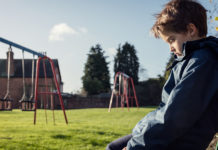If you want your daughter to feel better about her body, a Murdoch University researcher says to shift the focus from appearance to function.
Dr Bree Abbott of Murdoch’s School of Psychology and Exercise Science said findings from her four-year ARC-funded project have dispelled a number of popular misconceptions.
“Society constantly tells us teenage girls worry about their appearances and boys worry about how their bodies function, but I discovered that wasn’t the case at all,” Dr Abbott said.
“Young women value the function of their body more than their appearance, and they invest more time in it [than appearance], and are consistently more satisfied with that aspect than their looks.
“In reality, the more an adolescent’s focus moves from function to appearance, the unhappier they become. While this may seem like common sense, the message is not being communicated or put into practice.
“A lot of people are trying to improve body image for adolescent girls, but they almost exclusively focus on telling them to love what they have – ‘this is beautiful, that is beautiful’ – when it turns out they should be saying your looks are not all your body has to offer.”
One study within Dr Abbott’s research looked at body self-esteem in relation to physical activity, and involved 1,824 year 9 and 11 students from 34 rural and urban high schools.
Participants were divided into three categories: sedentary (no exercise); structured exercise (sports, gymnastics); and unstructured exercise (walking, jogging, gym).
“We found girls who did any form of exercise – structured or unstructured – felt better about their appearance than girls who were inactive,” Dr Abbott said.
“Sedentary girls were more focussed on their appearance, yet were unhappier with both their looks and the way their bodies functioned.
“We concluded that exercise provided that link to function and gave these young women another tool to evaluate their bodies, one much more tangible than appearance, which is subjective and dependent on environment, friends and popular culture trends.”
Dr Abbott said her work has become very real thanks to her three-year-old daughter.
“I watch my daughter – she’s just learned to spin and jump at the same time and she thinks it’s amazing. It would be terrible to see her lose that sense of wonder about what her body can do.”
Source: Murdoch University











